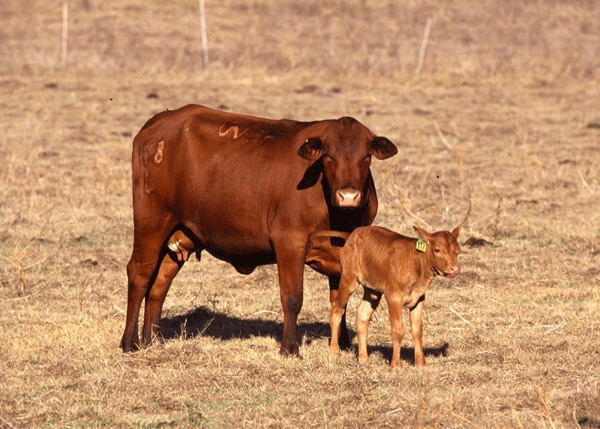November 23, 2010

A strange thing happened on the way toward settling North America. The cattle first brought to this continent centuries ago quickly eliminated native grass stands through overgrazing, leaving European settlers scrambling for transplanted grasses and clover.
Consequently, those pastureland grasses we typically assume are as American as apple pie — bermudagrass and Kentucky bluegrass, for example — aren't.
"We regularly plant 50 to 60 forage species, and hardly any of these are native grasses," says Don Ball, an Alabama Cooperative Extension System forage specialist and Auburn University professor of agronomy and soils.
Bermudagrass presumably first arrived in cattle feed brought over by Fernando de Soto. By the 19thcentury, it was being used as both a pasture grass and as a way to reduce soil erosion.
Likewise, Kentucky bluegrass is anything but Kentuckian. It grew in Europe and Africa before it was brought to North America by early settlers.
Now, after centuries, native grasses with names such as eastern gamagrass, switchgrass, big bluestem, little bluestem and Indiangrass are making a comeback.
A resounding comeback? No. But forage grass experts are nonetheless hopeful these native grasses will secure a respectable niche among more common transplanted grasses. In fact, some already are, Ball says — and for good reason.
"Take eastern gamagrass — it can potentially produce 6 to 8 tons of forage an acre each year," he says.
While it can be grown on many soil types, eastern gamagrass, typically planted as a pure stand, is especially well-suited to heavy soils or moist bottoms, he says.
Other native species are suited to a wide range of soils and sites throughout Alabama.
Warm-season option
In north Alabama, where cool-season forage is the norm on most farms, native grasses can offer a warm-season forage option, Ball says.
"They have extensive root systems that allow them to obtain moisture and nutrients from a large volume of soil," he says. "Consequently, they can be productive during periods of drought or in situations where little fertilizer has been applied."
While these grasses can be grown either for pasture or hay, they typically fit best as grazing crops, Ball says.
Challenges remain, though.
"The bluestems and Indiangrass have fluffy seed that are quite difficult to plant with conventional planting equipment," Ball says.
Likewise, while eastern gamagrass can be planted with a corn planter, its seeds have a physiological dormancy that requires a special wet chilling process just before planting.
Compared with transplanted species, native grasses also require considerably more patience on the part of the producer.
"With all these native grasses, establishment tends to be slow, so during the first year there is usually little forage production, and weed control may be a challenge," Ball says.
Yet another added challenge involves grazing management. The growing points of native grasses — the tips of stems where new growth occurs — tend to be more elevated in native plants, which is why grazing management is considered extra important.
"The plants should never be grazed more closely than 8 to 10 inches," Ball says, adding that controlled burns every three years during the winter are important to enhance productivity.
In fact, this limitation is what historically provided transplanted grasses with a distinct advantage over native species, Ball says. Much of the eastern United States was heavily forested before the European's arrival, which meant that native grasses were not subjected to heavy animal grazing more common on the Plains where buffalo were prevalent.
"The nomadic nature of grazing animals in the western plains provided native grasses with a rest period after being grazed," he explains.
Even so, Ball says these native species can last indefinitely on pasturelands where they're well adapted and well managed.
Also, in cases where grazing can be controlled, native grasses provide valuable summer forage during dry periods.
There are environmental advantages too. Native grasses are excellent wildlife plants, especially for ground nesting birds, such as quail and wild turkey, Balls says.
Their extensive root systems can also provide superb erosion control and serve as a buffer along riparian areas.
In some cases, the Natural Resources Conservation Service can offer financial assistance for planting native grasses, he says.
You May Also Like




